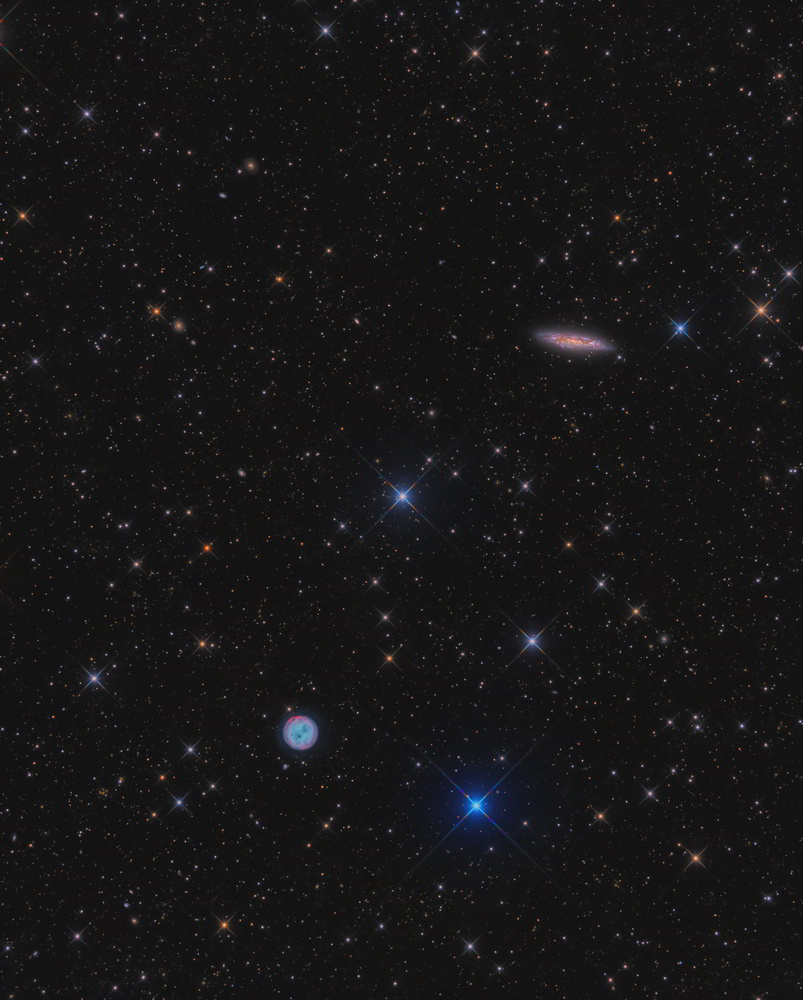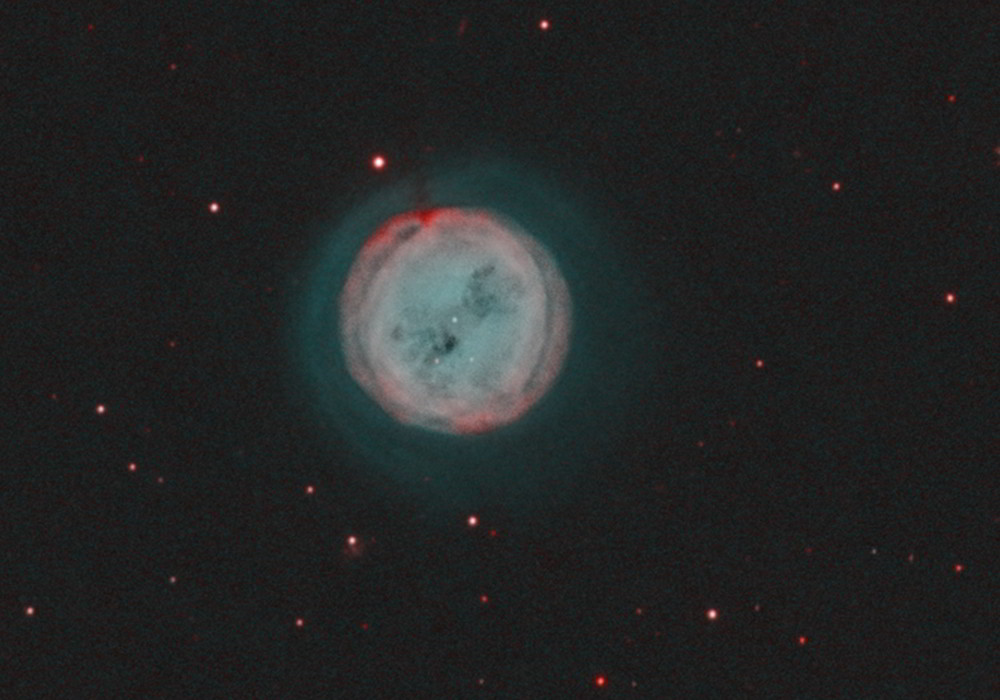Messier 97 & Messier 108

MouseOver for object identification, Click on image for a zoomable full resolution version
Narrowband image of Messier 97 (Halpha/OIII/OIII - 150% resolution):

|
Location / Date |
Zellerndorf, March/April 2020 |
|
Telescope / Mount / Guiding |
ASA 10" Astrograph, ASA 3" Wynne-Corrector (focal length 910mm) |
|
Camera / Exposure |
Moravian G3-16200, Astrodon filters
Lum 74 x 10min, R 26 x 5min bin2x2, G 28 x 5min bin2x2, B 30 x 5min bin2x2 Total exposure time: 31h 20min |
|
Processing |
PixInsight, Fitswork, Photoshop |
|
Notes |
Messier 97 (M 97) is a planetary nebula located in the Ursa Major constellation. The nebula is approximately 2000 light years away from earth, the estimated age is about 8,000 years. It was nicknamed as Owl Nebula because of its appearance in telescopes, which reveal two dark patches that look like the eyes of an owl. Messier 108 is a barred spiral galaxy and nicknamed as the Surfboard Galaxy. It is an isolated member of the Ursa Major Cluster of galaxies in the local Virgo Supercluster, a Supercluster that contains at least 100 galaxy groups and clusters, including the Virgo Cluster and the Local Group, which contains our Milky Way and the Andromeda galaxy. HCG 50 (Hickson Compact Galaxy Group) is a very faint group of 5 distant galaxies (between mag 18.4 and mag 19.7) about 1.8 billion light years away. |